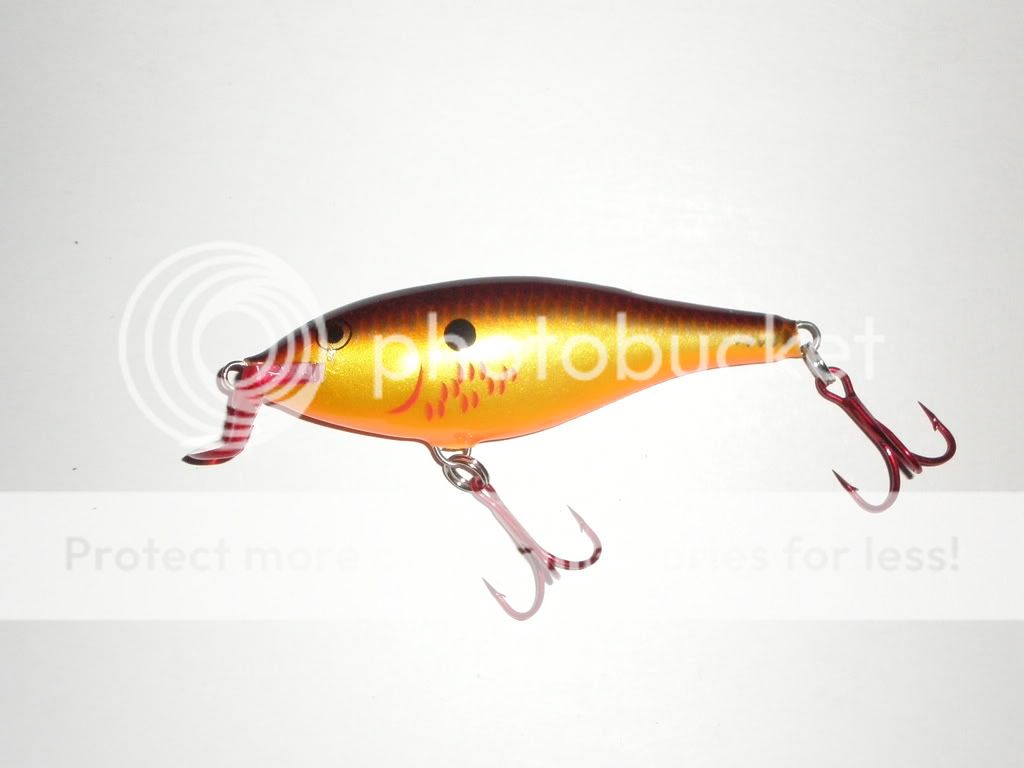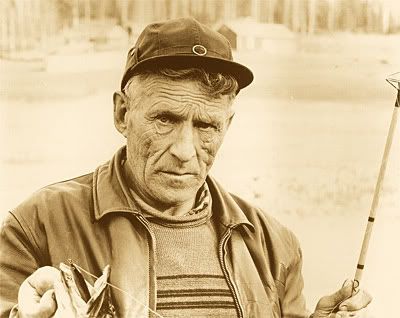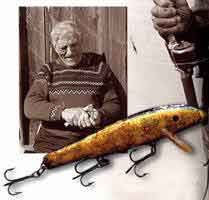GEWANG, WARNA dan SAINS
Tindakan dari kesan warna adalah berbeza mengikut sebagaimana kadar penembusan cahaya kedalam air.
Ini membuatkan pemilihan gewang dan warnanya menjadi teka-teki dan penuh soalan sains.
Dikatakan majoriti ikan dapat melihat warna dengan baik memandangkan komposisi mata ikan terdiri dari
bebatang dan kon. Penglihatan pada waktu siang dilakukan menggunakan sel-sel kon. Sel-sel ini menjana
kepada info tentang warna yang dilihat. Manakala bebatang dalam mata ikan pula bertindak sebagai ejen
penglihatan pada waktu malam. Bebatang ini lebih mengfokuskan akan kekuatan atau terang cahaya-cahaya
yang ada. Didalam gelap, tidak ada kekuatan untuk mengenal warna.
Mengenal jenis dan sifat ikan adalah amat penting, adakah mereka ini yang keluar mencari makan pada waktu
siang atau hanya pada waktu malam. Langkah pertama memilih warna adalah jelas. Pada waktu malam kita
memerlukan satu kaedah untuk menarik perhatian pemangsa malam lebih kerap. Dan pada sebelah siang kita
memerlukan pemilihan umpan/gewang yang lebih menarik perhatian dari segi warna, rupabentuk, bergetar dan
sifat pemantulan cahaya yang hebat. Untuk contoh > ikan seperti Bass adalah ikan siang manakala ikan Walleye
adalah ikan malam. Kadar penglihatan ikan Trout seperti Rainbow Trout dan Brown Trout juga hebat. Ikan-ikan
ini mampu membezakan dan melihat sinar spektrum warna dan mempunyai kebolehan melihat objek berwarna
dan menentukan samada objek itu dekat atau jauh. Ikan-ikan ini mampu membezakan jarak objek dalam jangka
waktu yang amat singkat melalui mengenal warna.
- O O O O O O O -
Cahaya bertindak berbeza tatkala beroperasi didalam air. Jarak gelombang warna yang panjang terdiri dari warna Merah, Oren,
Kuning, Hijau, Biru, Biru Tua (indigo), dan Ungu. Kesemua akan diserap sebaik sahaja mencecah air. Warna-warna ini akan
menjadi pudar dan menjadi hitam sebaik sahaja sentuhan pertama di air. Cahaya warna merah akan diserap secara total
apabila berada pada kedalaman 15-20kaki yang pertama. Oren pada kedalaman 30-40kaki dan Kuning pada kedalaman
60-70 kaki. Hijau dan Biru dikatakan akan bergerak jauh kedalam lagi selagi cahaya dapat menembusi dasar air. Kadar
cahaya akan berkurangan semasa bergerak menuju dasar. Mudah, kadar terang cahaya akan semakin malap.
Pada kedalaman 40kaki, warna kuning masih lagi kuning akan tetapi kekuatan warna ini tidaklah seterang sewaktu berada
diluar air.Kejernihan air dan aktiviti di air juga perlu diambil kira. Menggunakan warna merah pada tundaan gewang di selat
yang dalam tidaklah sama dengan penggunaan gewang yang sama di air sungai jernih yang bergerak laju. Penggunaan
gewang pada kadar kedalaman 10-12 kaki di selat yang dalam menunjukkan warna merah masih ujud. Manakala apabila
digunakan di sungai jernih berarus laju, warna merah ini hanya bertahan beberapa saat sahaja. Warna putih dan perak (silver)
adalah warna-warna yang bertindak efisien untuk menggewang di air yang dalam. Juga pilihlah gewang yang memantulkan
cahaya yang baik. Ini kerana warna-warna ini akan menjadi halimunan dalam masa sekejap sahaja seandai perairan itu
mempunyai latarbelakang dan sifat warna hijau atau biru.

Carta pemilihan warna mengikut kadar kekuatan cahaya matahari yang digunapakai di Jepun, Puerto
Rico dan US untuk menentukan pemilihan tepat bagi pemancingan ikan Billfish seperti Layaran dan
Mersuji.
CUACA MENDUNG ATAU LANGIT YANG TERANG?
Pada hari yang mendung, cahaya tidaklah begitu kuat dan terang. Tindakbalas warna tidaklah begitu baik pada cuaca sebegini.
Ini adalah perkara yang perlu diambil perhatian tatkala memancing pada waktu dan cuaca sebegini. Semakin gelap langit, semakin
kurang cahaya yang ada. Kita perlu tahu bagaimana memanipulasi pengetahuan dan penggunaan warna dalam cuaca seperti
langit gelap penuh awan hitam (mendung), langit terang penuh awan (50/50), langit terang tanpa awan (cahaya matahari yang
banyak).
PANCINGAN SIANG ATAU MALAM?
Seperti di perenggan pertama tentang bebatang dan kon mata ikan disini kita melihat pertukaran
fungsi kon dan bebatang pada mata ikan. Pada waktu senja dan menghampiri malam, kon tidak lagi begitu
aktif dan bebatang mata ikan akan memainkan peranan. Warna-warna sudah semakin pudar mengikut
kekuatan cahaya di luar dan dalam air. Di sini kita boleh menggunakan warna-warna yang terang dan
gelap mengikut kesesuaian cahaya dilangit. Warna merah adalah paling sesuai tatkala senja tiba. Ini
kerana warna ini bertentangan dengan cahaya di langit dengan kadar kontras yang baik. Hari yang
semakin bergerak, kita gunakan skala pemilihan warna bermula dari warna merah pada awal pagi. Diikuti
dengan warna biru, hijau, kuning dan oren.
Melihat terangnya langit dan cuaca akan membantu kita memilih warna gewang dengan baik. Kita perlulah
rajin mencuba sebanyak mungkin jenis-jenis gewang yang mahu digunakan. Ilmu tentang cuaca, kadar
terang cahaya, kadar jernih air, kedalaman air, jenis ikan pilihan membantu kita memilih warna gewang
yang sesuai untuk digunakan.
Pada awal perenggan tadi, kita bicarakan sains memainkan peranan penting dalam pemilihan warna.
Namun, rasa dihati dan naluri juga mampu membantu. Tidak semua perkara yang kita baca ini mampu
menolong. AWAS! cuaca akan bertukar-tukar, sifat pemakanan ikan akan berubah-ubah kerana bunyi
bising dan ragam pemangsa lain. Kadar PH dan suhu air berubah. Hari ini gewang warna merah akan laris,
esok sudah tak laku. Pada waktu malam, kawanan ikan akan berpecah dan ikan-ikan ini akan melihat
kontras apa jua pergerakan mangsa pada permukaan air (hasil dari kadar cahaya dilangit). Disini lah
pengetahuan tentang fasa peralihan cahaya bulan perlu digunakan.
Keseluruhannya,
apa jua percubaan yang rajin dan konsisten akan membuahkan hasil yang diinginkan. Ingatlah satu
perkara, kita boleh menggunakan apa jua bau, rasa dan getaran pada gewang, tetapi sekiranya ikan tidak
dapat melihat dengan baik warna dan jarak mangsa untuk diterkam-makan,anda KALAH! Disebabkan
itulah warna adalah komponen penting dalam pengembaraan menggewang anda.
Contoh contoh gewang / Lure yang berada di pasaran
shad rap - karau sederhana laju supaya lure
berenang dgn teratur

gewang dari strom jenis terampai mainkan dgn cara karau-henti-karau-henti


rapala rattlin - dalam...karau sederhana boleh, slow pun boleh....toman yang bersekala 1 kg kat kawasan lombong kat rumah aku cukup geram ngan gewang nih.

popper - karau sentap bg kuar buih n bunyi pop...


RAPALA HISTORY

gewang dari strom jenis terampai mainkan dgn cara karau-henti-karau-henti


rapala rattlin - dalam...karau sederhana boleh, slow pun boleh....toman yang bersekala 1 kg kat kawasan lombong kat rumah aku cukup geram ngan gewang nih.


popper - karau sentap bg kuar buih n bunyi pop...


==============================================================

In 1905, Lauri Rapala was born in central Finland, a flat land of evergreen forests peppered with hundreds of lakes. Not too much farther north, along the Arctic Circle in the area called Lapland, reindeer roam in large herds. The lakes here are very cold, like the aquavit that the Finns drink year round and the gamefish - pike, perch, trout and whitefish - grow very slowly.
At the age of seven, Lauri and his mother Mari settled in the parish of Asikkala, located about 60 miles from Helsinki. In writing the extract for the Sysma parish register, the clergyman forgot Mari's surname, Saarinen, and instead wrote the name of the village from which Mari and Lauri had moved - Rapala. In Finnish, the word "Rapala" means "mud."
Mari took a job as a maid and netminder in the household of Santeri Tommola in the Asikkala village of Sarkijarvi. As for Lauri, as soon as he was able, he was put to work like most Finnish children of that time. There were no schools in Sarkijarvi and no other means of financial support. There was only long, hard, back-breaking manual labor.
In his early twenties, Lauri met Elma Leppanen, who also served as a maid in the Tommola household. In 1928, the couple married and moved to the nearby village of Riihilahti to live in her parents' house, where they lived until 1933.
The early years of their marriage were dominated with struggle as a result of Europe's economic downturn. Times were tough and became even more challenging as the impact of the Great Depression in the United States swept throughout Europe.
In those years of shortage, Lauri worked during the winter as a lumberjack; in the summer, he worked as a farmer's hand or commercial fisherman. When fishing, Lauri netted whitefish and set long lines for pike and perch, which he sold at the nearby market. Lauri also would troll a baited hook for trout, because three trout, weighing more than eight pounds, could earn an equivalent of two weeks' pay in a nearby factory.
His work as a fisherman was hard and lonely. It constantly tested the young man. But at least Lauri was a "free man," as he would later tell his sons.
"Our father was a kind, humble man," says Risto, Lauri's second son. "He liked to spend time on the water. My best memories were those times when we fished. It was cold, and we would take a break, go to shore, start a fire to warm up and eat sandwiches prepared by our mother."
Lauri used a trotline with about a thousand hooks to catch northern pike and perch. He trailed the trotline behind his soutuvene, the traditional Finnish fishing boat. Lauri had no motor so he rowed about 30 miles every day, except in storms, of course, and he baited his own hooks with minnows from a nearby forest lake.
According to Risto, Lauri would fish for trout with a homemade fishing rod. When a trout hit, he would throw the rod overboard and row after it, allowing the fish to tire. That's how much a trout was worth.
Time on the water allowed Lauri to think much, as well as plenty of time to observe nature, particularly the behavior of fish. He would quietly row and sit over the clear water, watching schools of minnows swim along until - wham - in a heartbeat, one would be gone, the target of a large, hungry predator fish. After many years, Lauri observed that something caused one minnow out of an entire school to be singled out and attacked. That observation - a struggling, slightly off-center, wounded wobble - remained close to Lauri Rapala throughout his entire life.
"Our father really understood fishing," says Risto. "He recognized the relationship between bottom structure and where fish are located. He learned how fish fed, and how they moved from one location to another. And Lauri understood the effects of weather on fishing."
He thought a fishing lure might help him catch more fish, and in turn, earn more money. A well-made fishing lure also might eliminate the need to constantly bait lines. After all, minnows die, a fishing lure doesn't. So, Lauri whittled, shaved and carved. Eventually, a lure began to take shape.
Lauri worked hard but initially, his desire to capture that slightly wobbling action failed. Together, with his friend Akseli Soramaki and a local hermit, Pylvalainen, who lived on an island in the middle of Lake Päijänne, Lauri observed that his wooden lure did not have the same action as a live, wounded baitfish.
Lauri continued experimenting. He fiddled with hook assemblies and guttapercha sheets. Finally, using a shoemaker's knife, a file and sandpaper, he shaped his first successful lure from cork in 1936. Tinfoil from a neighbor's cheese packets and chocolate bars formed the lure's outer surface. Lauri melted unwanted photographic negatives on the lure to create a protective coating, since he was unable to obtain lacquer. This first lure still exists today - it's black on top, gold along its flanks, and white on the bottom - just like the minnows of Lake Päijänne.

When he completed it, Lauri trolled his first successful lure with a line tied to his thumb to prevent the lure's loss. It mimicked an injured minnow so well that trout and pike hungrily attacked it. As fish tales go, his sons Risto and Ensio, who were young children then, say Lauri sometimes caught 600 pounds of fish a day with his new lure.
Lauri Goes to War
In 1939, war broke out through Europe. Shortages of all types worsened and Lauri's growing family needed food. Fortunately, his little invention worked and he caught many fish. With his knowledge of nature, Lauri switched from cork to pine bark to create lures. Lauri obtained the bark from pine stumps and logging sites. Some owners were probably surprised when Lauri asked to buy their crooked pine trees, and even more so when he left the trees bare - the bark painstakingly removed.
When the Soviet Union invaded Finland, Lauri left his family to defend his homeland. When Nazi Germany declared war against the Soviet Union, the enemies switched, and the Finnish people soon found themselves fighting the invading German Army.
Word of Lauri's lure spread during the war years. He frequently used the lure to catch fish for himself and his army friends. Legend has it, according to his grandson, Jarmo Rapala, that Lauri's lure received a "bang" of promotion one day when he challenged his Army friends to a fishing contest. During those times, dynamite was sometimes used to obtain fish. Lauri said his lure could do better, and after several hours of fishing, Lauri caught 78 fish, far exceeding what his friends "caught" with dynamite. After six years in the Finnish Army, Lauri returned to his family.
Family Business
Demand for Lauri's lure increased after the war, particularly among summer vacationers to Lake Päijänne. Lauri was surprised that anyone would buy his lure. Yet the lure's reputation grew as word of Lauri's abundant catches spread throughout the region.
By 1948, Risto, Ensio, Esko and Kauko, Lauri's four sons, were emerging as young men. Lauri taught them the craft of making the Rapala fishing lure, and they all caught on quickly. Ensio, in particular, did so well that one of the lures he carved won a national craftsmen's award.
For her part, Elma designed and wrote promotional copy for the lure boxes. Because she could read, write and understood mathematics, Elma handled the bookkeeping, and made sure the family was paid for their hard work.
"Lure making was good for our family," says Risto. "In addition to giving us work, it helped to keep our family together and taught us many life lessons, especially the value of honesty and hard work."
The enterprising business also had a big impact on the village.
"At first, I don't think Lauri received much respect," Ensio says. "Afterall, who knew what would become of this business? It wasn't a respectable profession, like a lumberjack. Some even said he was lazy. But our father didn't listen to the criticism, or become angry. He just went about his business."
"Later," adds Ensio, "when we started working with Normark, he earned respect because it brought work and money to the village."
Machinery improved the quality of the lures, and enhanced production efficiency. The first sign of mechanization was the introduction of an old spinning wheel with a strip of sandpaper around it. The spinning wheel was used to smooth and polish the lures. Ensio developed a special circular saw and a band saw to create identical lure blanks.
"We each had our favorite part in making the lures," says Risto. "Ensio liked painting the eyes, I liked to glue the celluloid on the surface, and our father liked carving them. We all took great pride in our work."
"It was very natural how we split the work," adds Ensio. "We each had our talents, and we complemented each other well. Later, when it came to running the business, we did the same thing. I enjoyed the bookkeeping, accounting and taking orders, while Risto enjoyed managing the plant."
As mechanization gradually crept into the lure-making process, Lauri maintained one rule above all others - accuracy.
"The key to our success is accuracy," says Risto. "We make sure every lure remains true to a pattern. We make sure our measurements are exact, because any inaccuracies, even just a little, can strongly affect the wobble action of the lures."
To make sure the lures were made just right, Lauri insisted on tank testing for every Rapala lure - to ensure that each one swam true to the unique "wounded-fish action." No exceptions. Lauri viewed testing as his final stamp of approval. In the winter, the lures were tested in an indoor shed belonging to a timber floating company; in the summer, Lauri and his sons tested the lures along the shores of Lake Päijänne, in the Kalkkinen Rapids.
For a number of years, the lures were simply referred to as "wobblers," and were sold in boxes hand-made by Elma. As the Rapala family started selling more lures, they needed more boxes, which required formal printing and assembly.
Ironically, the clergyman who gave Lauri Rapala his name was the house manager of the printing company and suggested that the most appropriate name on the box would be Rapala. At the time, the enterprising family made about 1,000 lures a year.

No comments:
Post a Comment